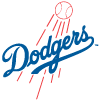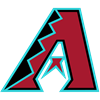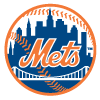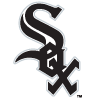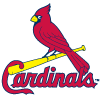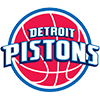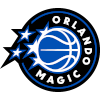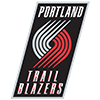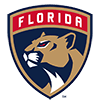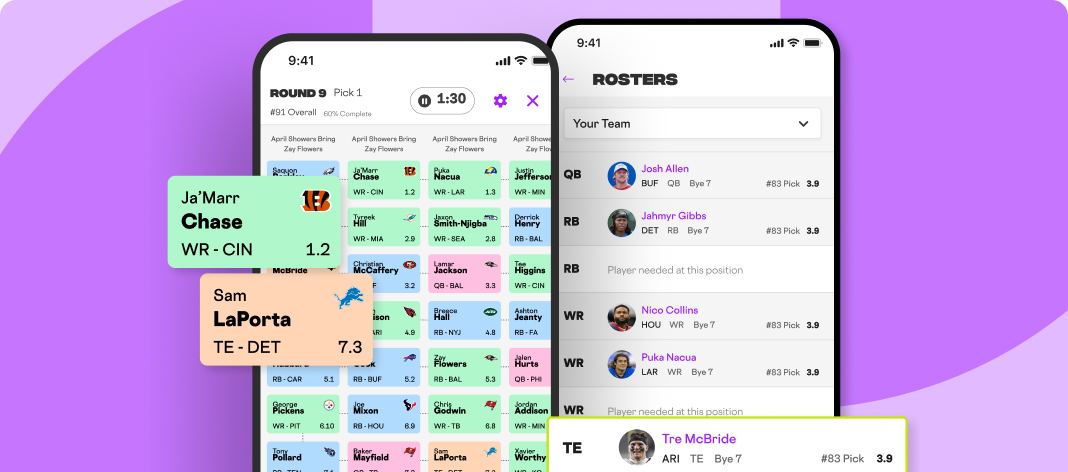Most dynasty managers love a rebuild, and we all love winning championships. Managing teams in the middle is the grunt work of this hobby, forcing us to make difficult decisions en route to what usually ends up being a season-ending loss at some point between Week 14 and Week 16.
After writing about my favorite strategies for tanking and rebuilding last week, it's now time to look at how I handle medium-strength dynasty teams, keeping in mind that we want to create a path to the bottom or the top (rather than being static and hoping to get lucky). I'll outline my process below, roughly in chronological order of the steps, before elaborating on some of the details that fit with various pathways.
Evaluate trades or get ready for a first-year draft with fantasy football dynasty rankings on RotoWire.
Step 1: A Realistic Assessment of Our League and Team
For those who have played in many different types of dynasty leagues, this step may come naturally and not require a formal process. For those who haven't been playing for long, or don't have much experience with a specific type of league, this step might mean sitting down with pencil and paper (or a spreadsheet).
We first want to figure out where we rank in our league in terms of team strength for the current year — are we third, fourth, sixth, eighth? Once that's done, we need context. Some leagues have a bunch of teams bunched together near the top, which means the fourth-strongest team has a reasonable shot at a championship and should respond accordingly. In other leagues, there are a few juggernauts far ahead of all others, which might point us toward a rebuild even if we have the third/fourth-best squad out of 12.
Some formats are more forgiving than others. In my 10-team, single-QB dynasty league that started up in 2023, nearly every team can set a decent lineup each week, and it's rare to see anything more than a 60/40 favorite in a playoff matchup. We just had a No. 4 seed win the title after going 8-6 during the regular season. It's a different story in my 14-team, superflex league, where five of our six champions had a first-round bye and finished top two in points during the regular season.
Bye weeks in the playoffs, or lack thereof, are another important factor to consider. In leagues with byes, there's additional incentive to avoid getting trapped in the middle and either go all-in for the current year or bite the bullet and rebuild. However, people often interpret this differently, figuring that six playoff spots means mediocrity can do the trick. That doesn't usually work out well, although there are exceptions, as noted above with my example of 10-team, single-QB league that's only two seasons in.
Step 2: Wheeling and Dealing
One of the few good things about being in the middle is that we aren't directionally committed. We don't need to decide "I'm rebuilding" or "I'm all-in for this year," and then make trade offers accordingly. We can instead put feelers in a number of different directions to see where the value lies.
Even better if we let our league mates know that's what we're doing, as the willingness to consider all types of offers increases leverage in trade negotiations — people are more likely to make weak offers if they know we're committed to a single approach. In fact, it might make sense to pretend this is the case even if we've internally committed to the all-in path or a rebuild. Sneaky, sneaky.
Step 3: Choose a Path
Once we've evaluated our league top to bottom and spent some time seeing what's available on the trade market, it's time to pick a path and commit to it. There are basically three reasonable options, the way I see it, although some might say "do nothing" is Door D (not a fan, personally).
- Option A: All-In For a 'Ship
One of the biggest mistakes I see people make is inching toward this path and only half-committing, or chickening out. They decide they're going to "go for it" but instead of pushing all their chips into the middle to build the best team possible, they try to move a bunch of 2nd/3rd-round picks or mediocre prospects for the Mike Evanses and James Conners of the world. There's nothing wrong with Evans or Conner; those are great players to target. But they aren't going to come as cheap as we might hope, they won't necessarily put our team over the top, and they may not retain trade value if we end up in "sell" mode the following offseason.
You know who will retain trade value? CeeDee Lamb and Justin Jefferson. And they might actually put our team over the top, in the meantime. Sure, the price will be multiple first-round picks or top prospects, but there's a good chance we'll get a similar package in return if things don't work out as we'd hoped and we try to move Lamb/Jefferson later on. If we're going all-in to win right now, we should try to get at least one superstar and one or two other starter-level players (e.g., Evans/Conner), even if it means giving up a ton of draft capital over the next two years.
- Option B: Tank and Rebuild
Most fantasy managers aren't willing to do this with a decent team, but more should consider it, especially in top-heavy leagues or formats that make it tough for underdogs to make championship runs. The key point, for me, is that a rebuild often moves along faster and bears more fruit if we start it from a higher point, i.e., tearing down a team with a lot of valuable pieces, rather than a last-place team that's been forced to rebuild.
I wrote an article about this type of voluntary tank/rebuild prior to the 2022 season, using one of my own teams as an example. I went 0-14 that year, but I was back in the playoffs the next season and won the league in 2024. I quickly returned to contender status thanks to some nice hits in the 2023 Draft (De'Von Achane, Rashee Rice, Jordan Addison) combined with discount veteran additions like Chuba Hubbard and Raheem Mostert. Funny enough, I never ended up making most of the future picks I acquired during my tear down, instead trading those 2024 and 2025 selections for veterans like Ja'Marr Chase, A.J. Brown and Kyler Murray.
A team that chooses to tank with, say, the fourth-best roster in the league might be back to playoff contention as soon as the second year of the process. A team that unwittingly bottoms out and rebuilds from there is usually looking at a three-year process, in my experience, and with lower odds of eventually making it to the very top.
ICYMI: My Strategy for Tanking and Rebuilding
- Option C: Tweak for Upside/Variance
This is the less proactive option among the three pathways, but I think it still beats the heck out of doing nothing. The way it works is we hold on to our top draft picks and our best players, instead pursuing other, smaller move that increase our odds of shooting up to either the top or bottom of the standings. This approach is best deployed pre-season, as we're often making bets on specific players or offenses to break out. We can then see how things play out early in the campaign, potentially shifting to Option A or Option B at that point. Here's how it's done:
1. Trade Safe Players for Riskier Ones
Maybe we try to trade Zay Flowers for Rome Odunze, or send out DeVonta Smith for Rashee Rice. While Flowers and Smith are known to be good players and have solid track records of durability, they're both stuck in run-first offenses that have plenty of other pass-game weapons, likely limiting them to low-end WR2 or WR3 status in fantasy. Odunze and Rice come with more risk of failure, but they're also younger, and arguably have less complicated paths to WR1 or high-end WR2 status.
Other examples I might consider: Trading Justin Herbert for Drake Maye and a R3 pick. Swapping Jordan Love for J.J. McCarthy. Or David Montgomery for Alvin Kamara. We're mostly trying to find players that have significant concerns regarding age, durability or team context, but with enough talent (and opportunity) to put up huge numbers if things break in their favor. You might not agree with my examples, as this does entail subjectivity, but I'm sure you can come up with your own.
2. Stacking Teammates/Offenses
This tends to work best in leagues that use best-ball scoring, but it's also a viable strategy in lineup-setting leagues, allowing us to capture value at multiple spots if a certain offense crushes expectations. Let's say we're already relying on Trevor Lawrence, with not much at QB behind him. Hoping that Liam Coen can turn the Jacksonville offense around, we then trade for RB Travis Etienne and TE Brenton Strange, both of whom can be had without anything like first-round picks entering the discussion.
I particularly like to target teams that have new coaching staffs or new starting quarterbacks. The Titans are another example, with RB Tony Pollard and WR Calvin Ridley being affordable veterans who might benefit if Cam Ward is the real deal. Or maybe you're a fan of Kellen Moore and Tyler Shough, in which case Kamara and Rashid Shaheed could be combined with the rookie QB to make a bet on competence in New Orleans.
3. Target Prospects With Favorable Year 1 Outlooks
This will mostly be done during a rookie draft, but it can also be accomplished via trades thereafter. I don't recommend giving up a ton of value, like drafting Jaydon Blue over a vastly superior prospect, but maybe we take Blue if it's a close call, figuring he has a better shot to pop off Year 1 in the event he doesn't stink.
Other rookies in favorable situations for early playing time and production — beyond what their draft capital might seem to suggest — include Seahawks QB Jalen Milroe, Broncos RB RJ Harvey, Saints RB Devin Neal, Cowboys RB Phil Mafah, Patriots WR Kyle Williams, Titans WR Elic Ayomanor and Titans WR Chimere Dike. Personally, I'm a fan of Milroe, Harvey, Williams and Ayomanor, in addition to Blue.
We can also apply similar thinking to 2024 prospects who were neither clear successes nor busts as rookies, and now have better paths to playing time. Bills WR Keon Coleman, 49ers WR Ricky Pearsall, Dolphins RB Jaylen Wright and Cardinals RB Trey Benson are reasonable breakout candidates that won't cost an arm and a leg.











